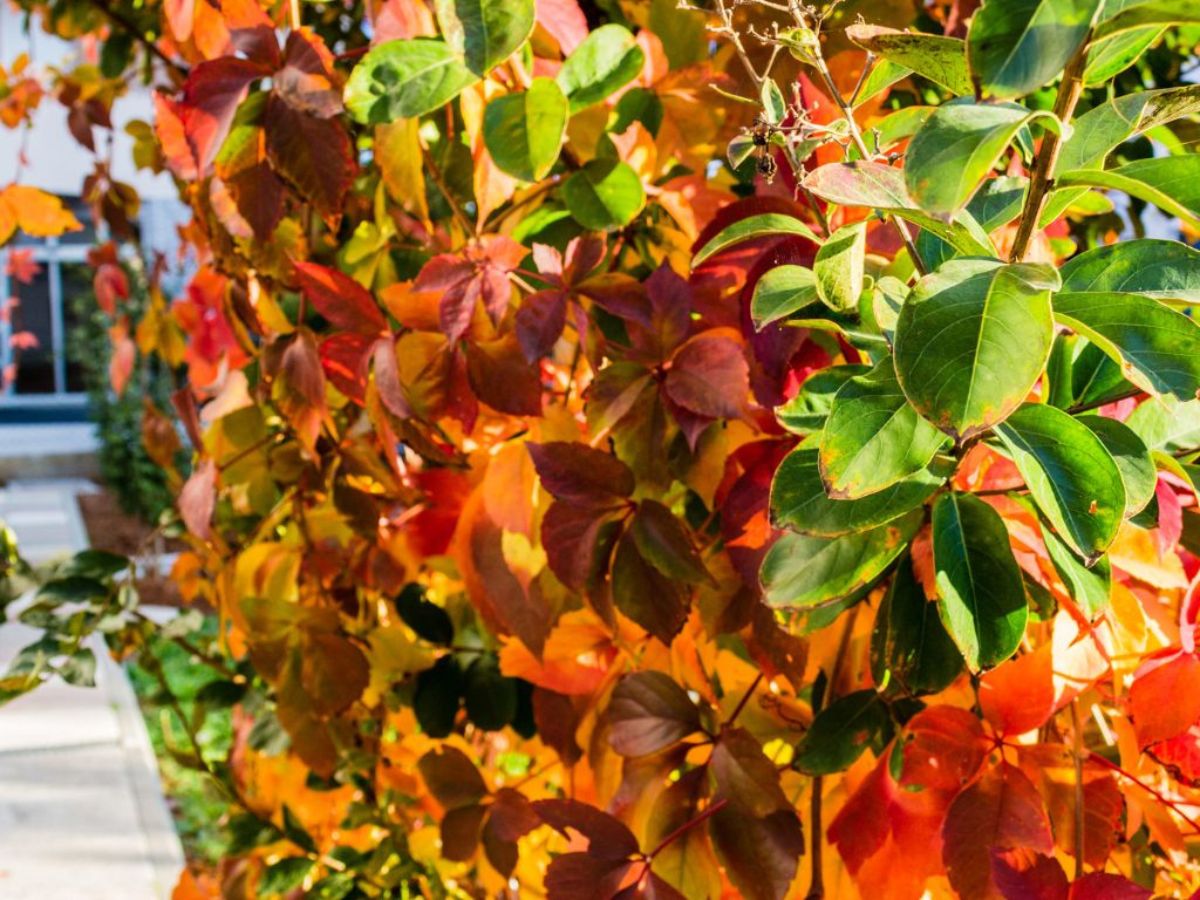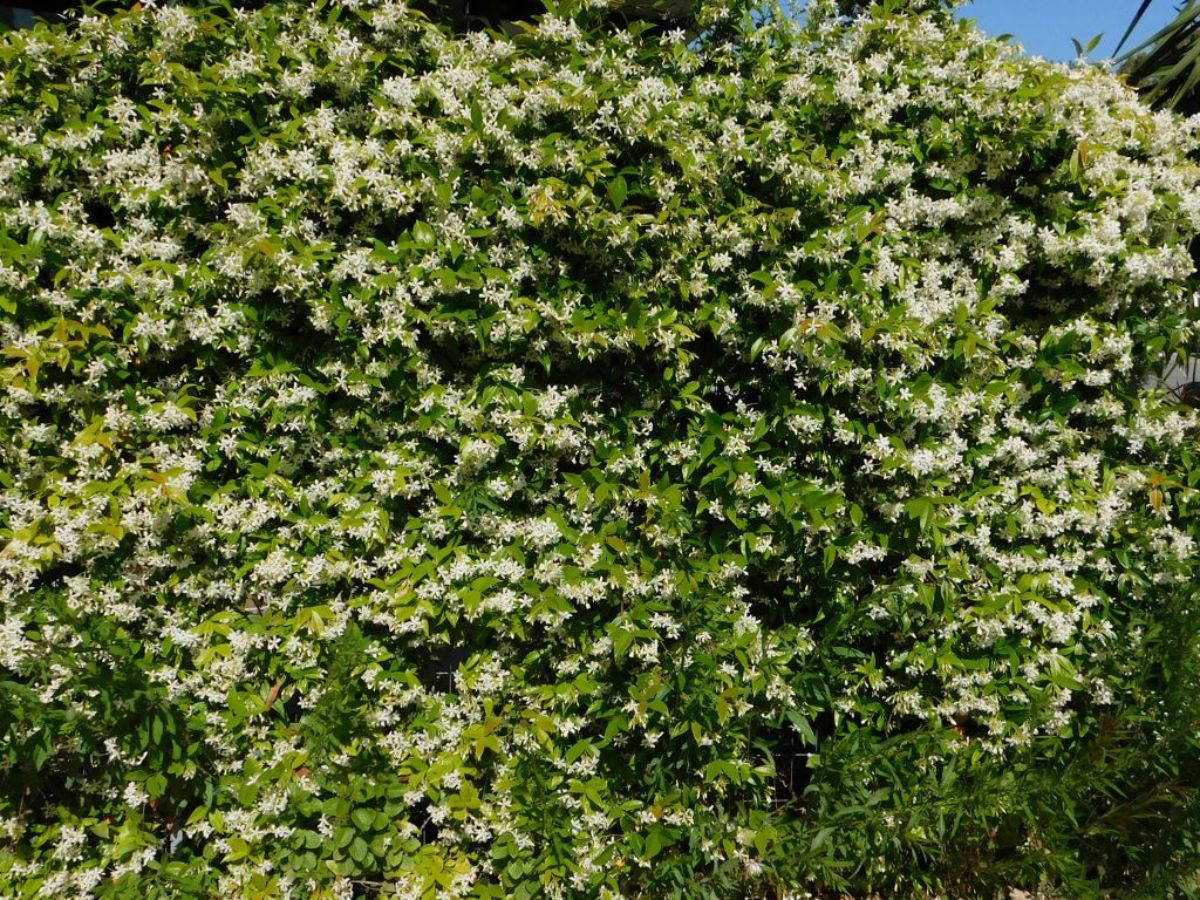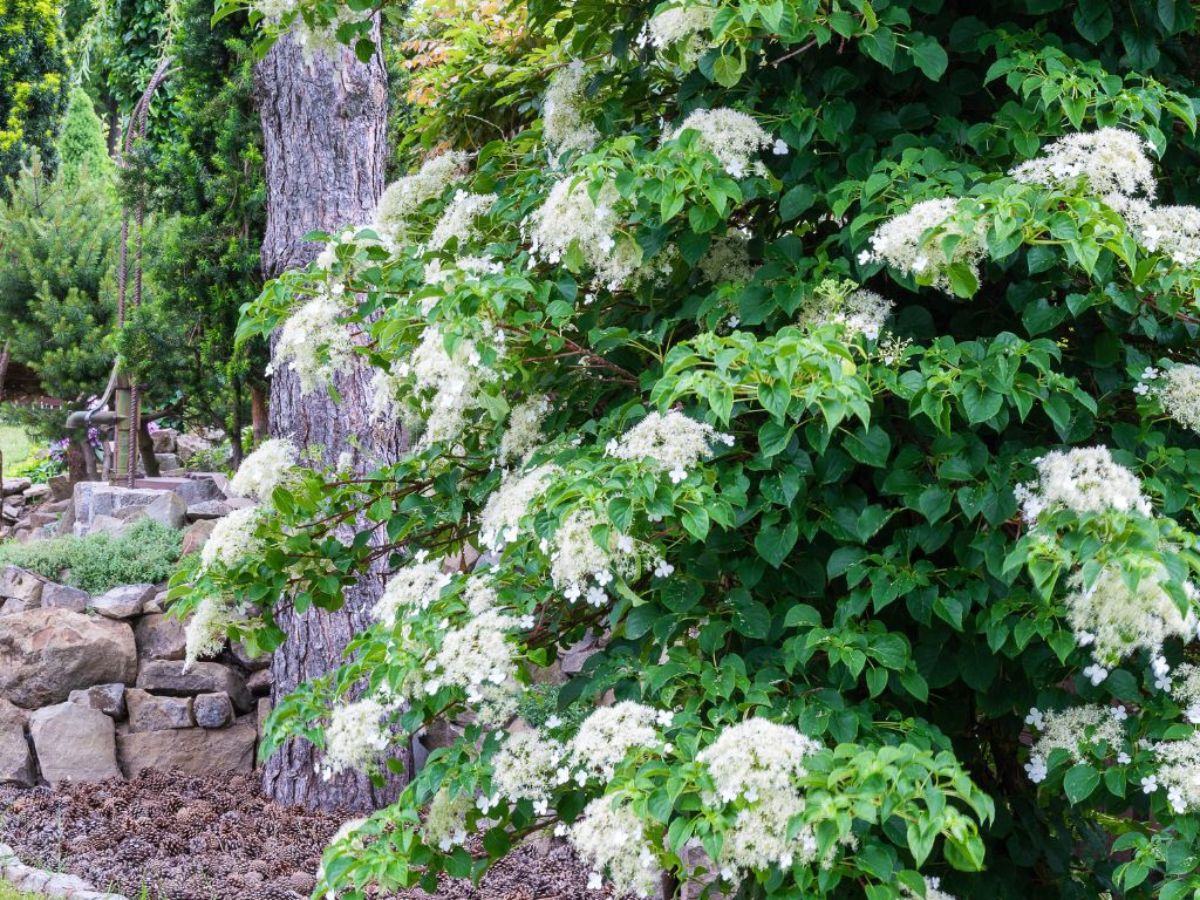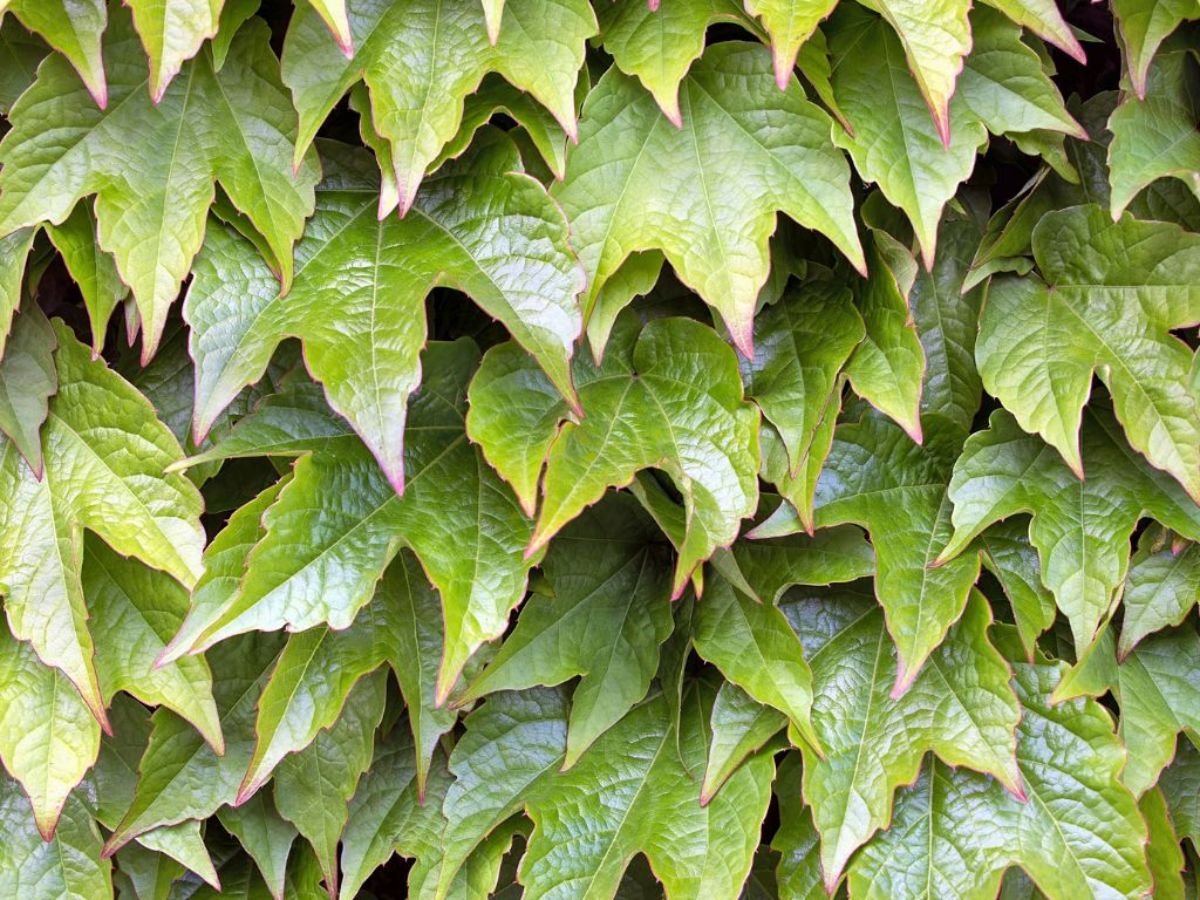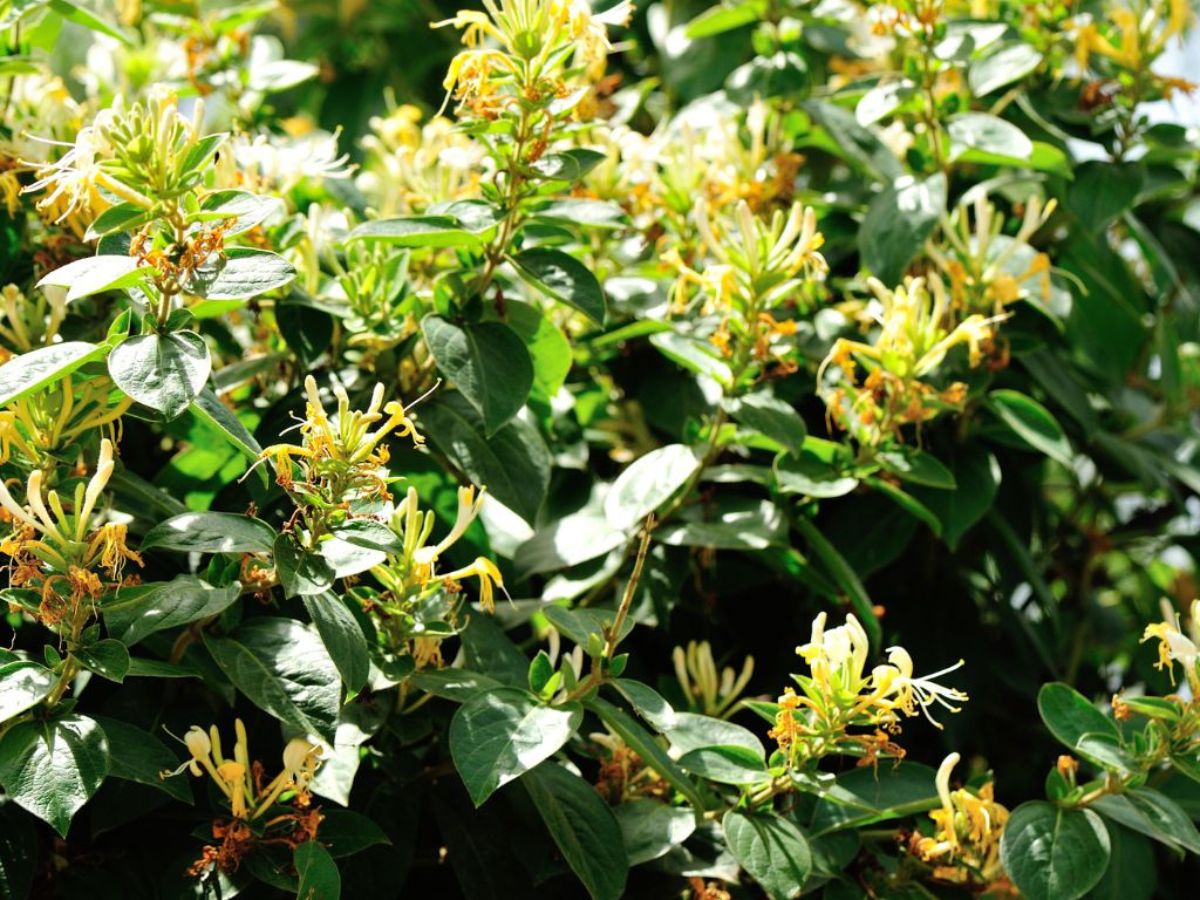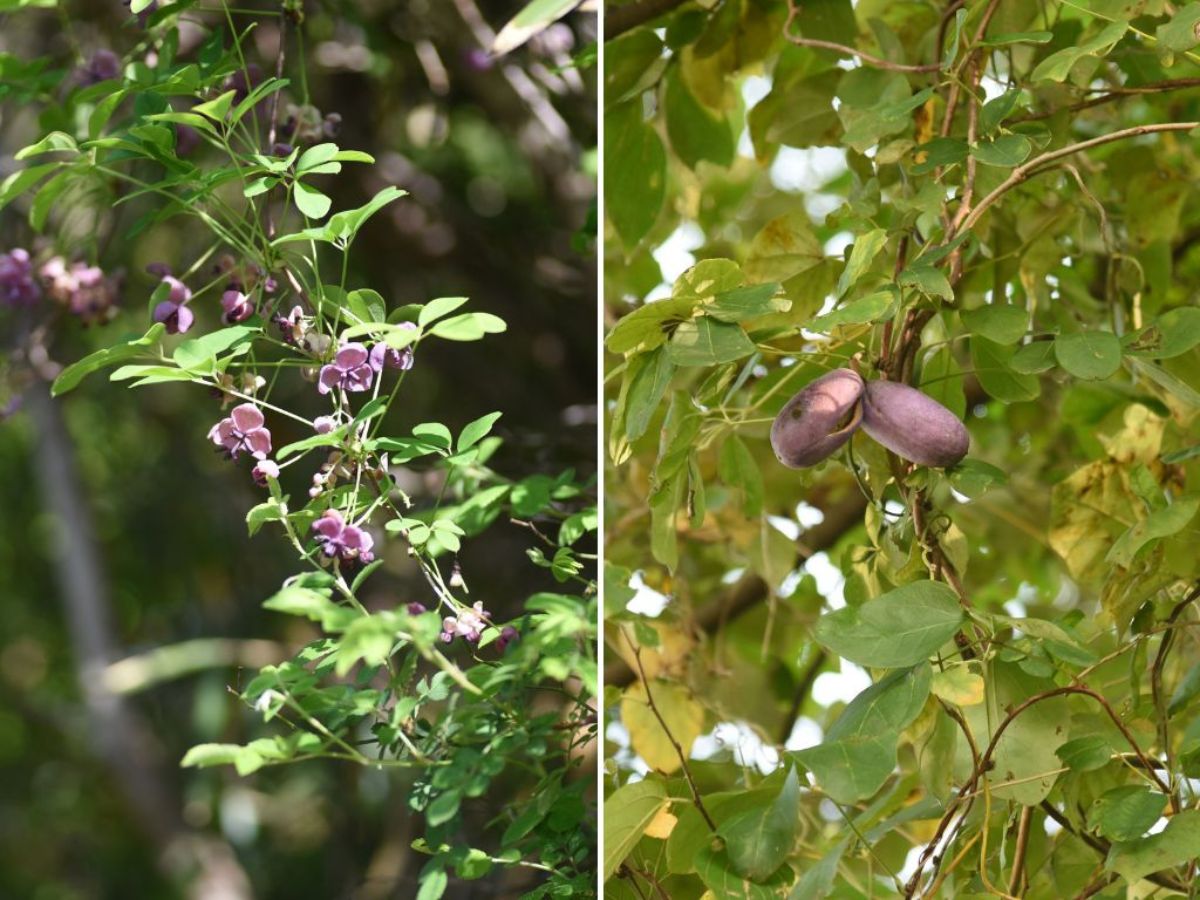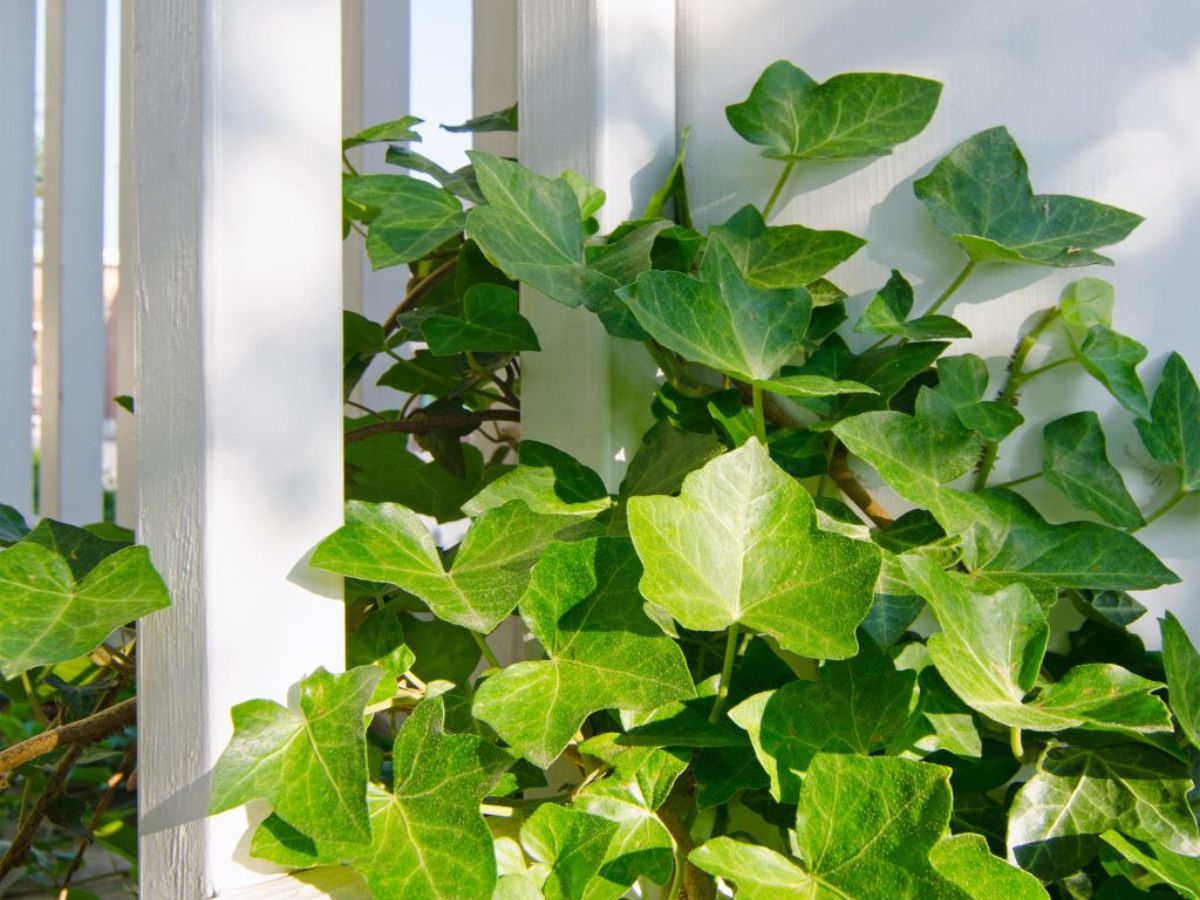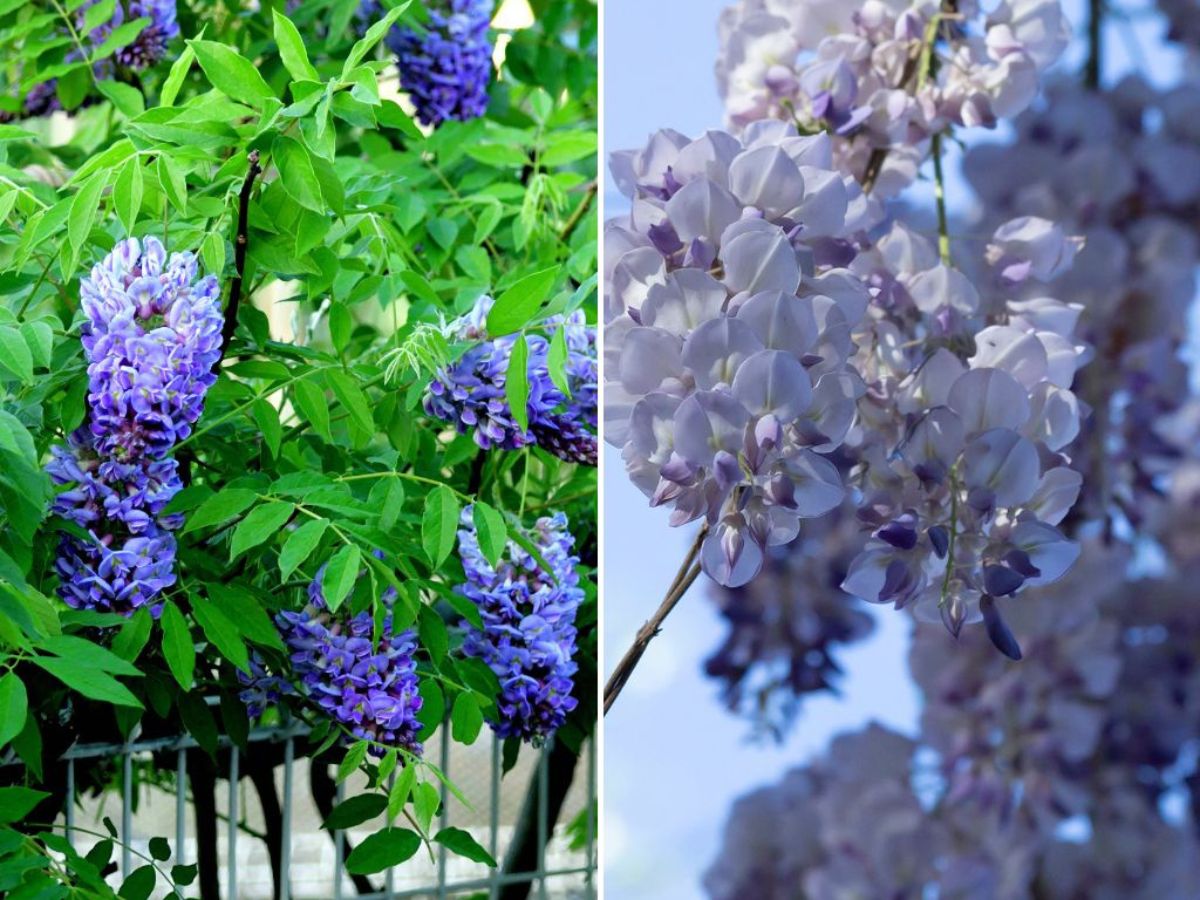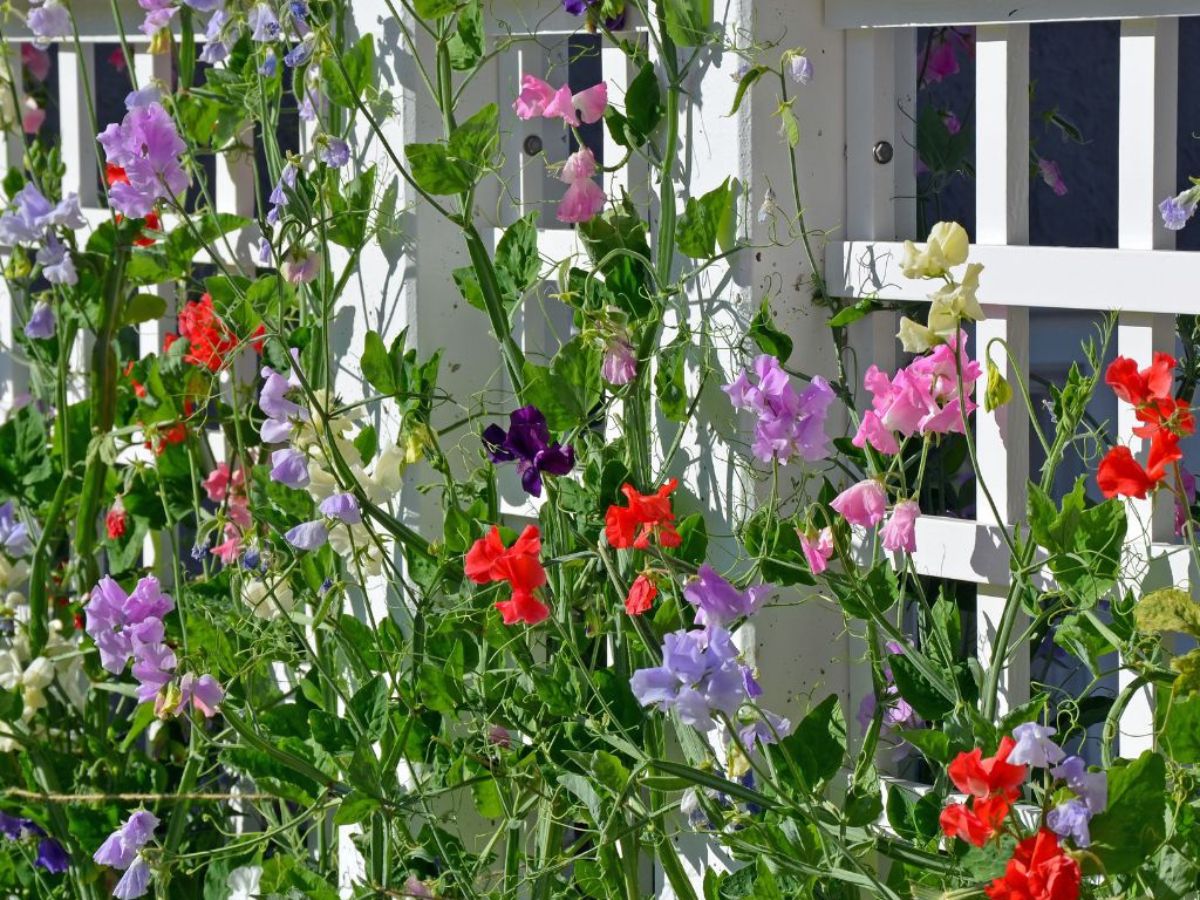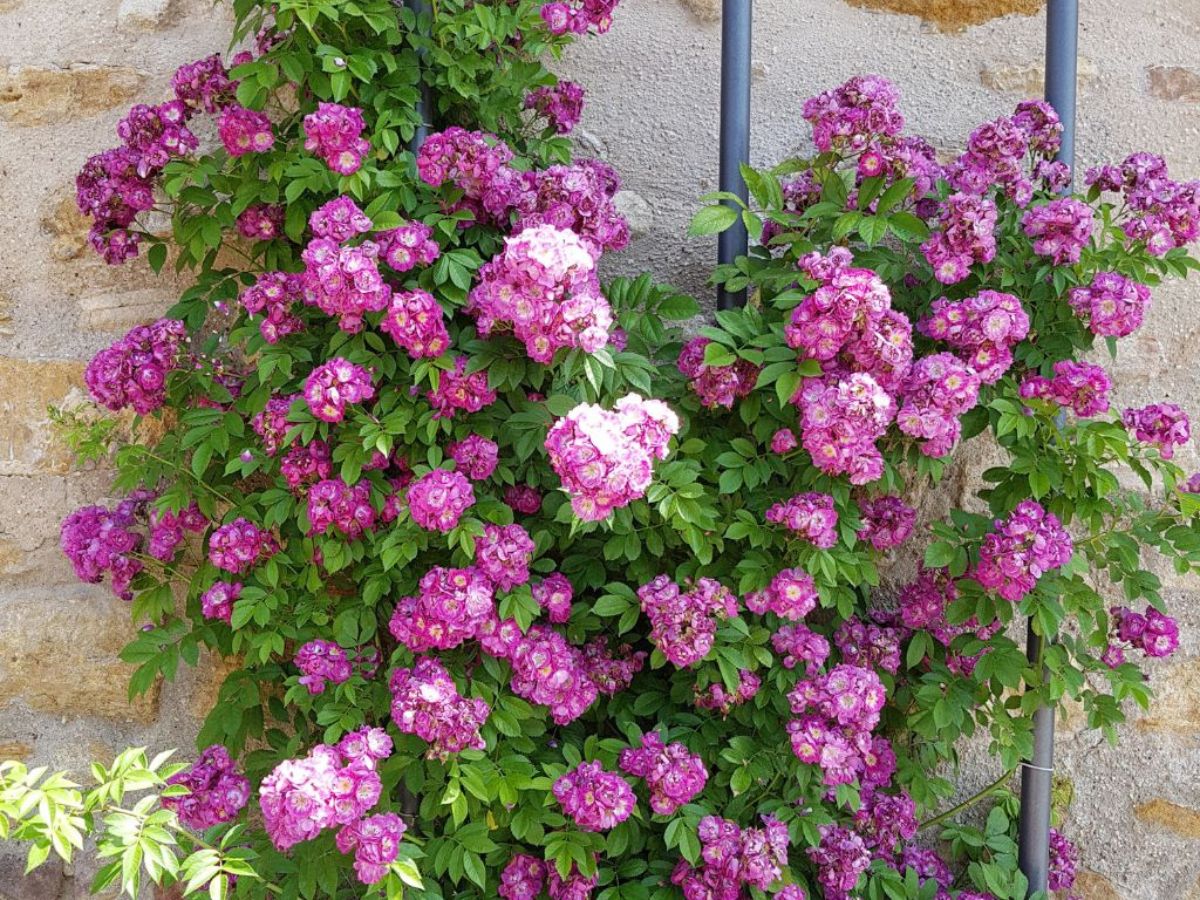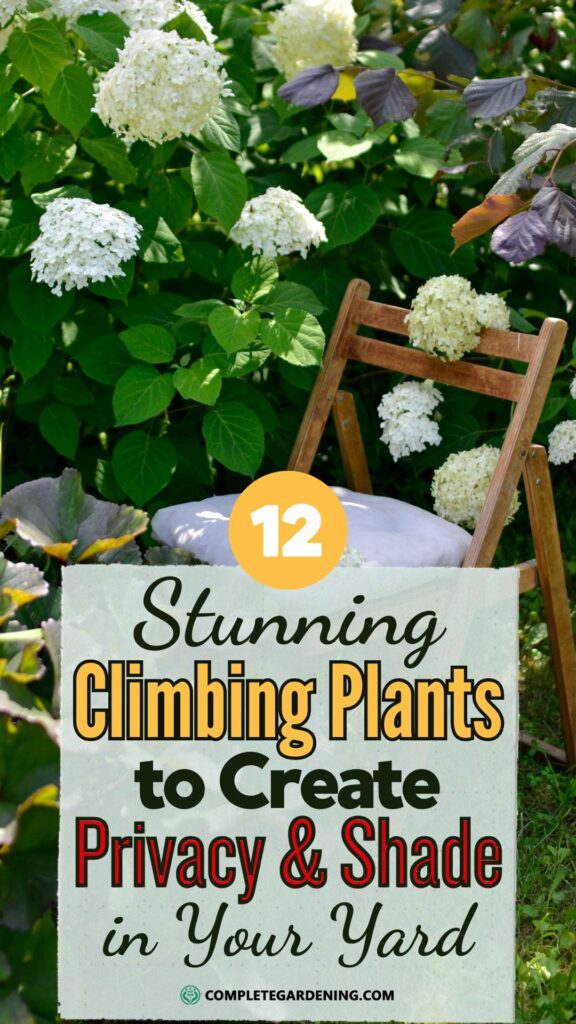Creating a serene, private oasis in your yard can be as simple as planting climbing plants.
These versatile, vigorous growers not only provide natural shade but also enhance privacy and add visual interest to any outdoor space.
Here are 12 stunning climbing plants that will transform your yard.
1. Clematis
Clematis is a popular choice for gardeners due to its vibrant, large flowers that come in a variety of colors, including purple, pink, red, and white.
This versatile climber thrives in partial shade and can grow up to 20 feet tall.
Clematis needs well-drained soil and a support structure such as a trellis or fence. Popular varieties like Clematis ‘Nelly Moser’ are known for their shade tolerance and stunning blooms.
To encourage prolific flowering, prune the plant in late winter or early spring.
2. Virginia Creeper
Virginia Creeper is a fast-growing climber perfect for quickly covering walls, fences, and arbors. Its lush green foliage turns a spectacular red in the fall, adding seasonal interest to your garden.
Virginia Creeper can grow up to 50 feet long and is hardy in zones 3-10. It’s a self-clinging plant that requires little maintenance, making it ideal for busy gardeners.
However, due to its vigorous growth, regular pruning is necessary to keep it in check.
3. Star Jasmine
Star Jasmine, also known as Trachelospermum jasminoides, is renowned for its fragrant white flowers and glossy evergreen leaves. This climber is perfect for creating a scented canopy over pergolas and trellises.
Star Jasmine thrives in zones 8-10 and prefers well-drained soil. Although it blooms best in full sun, it can tolerate partial shade.
Regular pruning helps maintain its shape and encourages denser growth.
4. Climbing Hydrangea
Climbing Hydrangea (Hydrangea anomala subsp. petiolaris) is a beautiful climber that produces large clusters of white flowers. It is ideal for shaded areas, making it perfect for north-facing walls.
This plant can grow up to 50 feet long and is hardy in zones 4-8. Climbing Hydrangea clings to surfaces with aerial roots, and its lush foliage provides excellent coverage.
It prefers moist, well-drained soil and benefits from a slow-release fertilizer in spring.
5. Boston Ivy
Boston Ivy (Parthenocissus tricuspidata) is an excellent choice for those who love the look of buildings covered in lush greenery. This climber adheres to surfaces effortlessly and can grow up to 50 feet long.
Its green leaves turn vibrant red in the fall, adding a striking visual element to your garden. Boston Ivy is hardy in zones 4-8 and thrives in both sun and shade.
Regular pruning helps keep its vigorous growth in check and prevents it from becoming invasive.
6. Honeysuckle
Honeysuckle (Lonicera spp.) is a beloved climber known for its sweet scent and tubular flowers that attract hummingbirds and butterflies. It grows well in both sun and shade and can reach heights of 20 feet.
Honeysuckle varieties such as Lonicera periclymenum ‘Serotina’ thrive in shady conditions and produce beautiful, fragrant blooms.
To maintain healthy growth, prune the plant after flowering to encourage new shoots and more flowers the following season.
7. Chocolate Vine
Chocolate Vine (Akebia quinata) is an intriguing climber that features purple flowers with a light chocolate scent. This vigorous plant can grow up to 40 feet long and thrives in zones 5-9. It prefers partial shade and well-drained soil.
Chocolate Vine is perfect for covering large areas quickly, but it can be aggressive, so regular pruning is necessary to keep it manageable. Its unique scent and attractive foliage make it a standout in any garden.
8. English Ivy
English Ivy (Hedera helix) is a classic climber for shaded areas, providing dense, evergreen foliage that adds privacy and reduces noise.
It can grow up to 80 feet long and is hardy in zones 4-9. English Ivy is versatile and can be used to cover walls, fences, and even the ground.
It thrives in well-drained soil and requires minimal maintenance. However, it can be invasive, so it’s important to keep its growth under control with regular pruning.
9. American Wisteria
American Wisteria (Wisteria frutescens) is a less aggressive alternative to its Asian counterparts, producing beautiful purple flowers in spring.
It can grow up to 30 feet long and is hardy in zones 5-9.
American Wisteria thrives in partial shade and prefers moist, well-drained soil. This climber needs sturdy support due to its heavy wood and vigorous growth. Pruning after flowering helps maintain its shape and encourages more blooms.
10. Trumpet Vine
Trumpet Vine (Campsis radicans) is a native plant known for its bright orange-red flowers that attract pollinators, particularly hummingbirds.
It can grow up to 40 feet long and is hardy in zones 4-9.
Trumpet Vine thrives in both sun and shade and is tolerant of wet soils. However, it can be aggressive and may require regular pruning to prevent it from overtaking other plants.
Its stunning flowers and robust growth make it a popular choice for creating natural privacy screens.
11. Sweet Pea
Sweet Pea (Lathyrus odoratus) is an annual climber that offers a delightful fragrance and a variety of colors, including pink, red, white, and blue. It can grow up to 10 feet tall and thrives in well-drained soil and partial shade.
Sweet Peas are perfect for adding charm to shaded corners and are often used in cottage gardens. Plant them in early spring and provide a trellis or other support for them to climb.
Deadheading spent flowers encourages continuous blooming throughout the season.
12. Climbing Roses
Climbing Roses (Rosa spp.) add elegance and color to any garden space, with many varieties thriving in partial shade. Roses like ‘Claire Austin’ produce fragrant blooms even with just a few hours of sunlight each day.
Climbing Roses can grow up to 20 feet long and are hardy in zones 5-9. They prefer well-drained soil and benefit from regular feeding with a balanced fertilizer.
Pruning in late winter or early spring helps maintain their shape and encourages abundant flowering.
Planting and Maintenance Tips
To ensure your climbing plants thrive, follow these essential planting and maintenance tips:
Soil Preparation: Amend the soil with organic matter such as compost to improve its structure and provide essential nutrients. Ensure the soil is well-drained to prevent root rot.
Watering Needs: Water deeply but infrequently to encourage strong root development. Check soil moisture regularly and water when the top inch feels dry.
Pruning and Training: Regular pruning helps maintain the size and shape of your climbing plants and promotes healthy growth and flowering. Use soft garden ties to gently attach vines to support structures, guiding their growth.
Support Structures: Provide sturdy supports such as trellises, arbors, or fences to help your climbers grow vertically and cover the desired areas effectively.
Monitoring: Regularly inspect your plants for signs of pests or diseases and take prompt action to treat any issues. This proactive approach keeps your plants healthy and vibrant.
Integrating these stunning climbing plants into your yard can create a beautiful, private, and shaded oasis.
With proper care and maintenance, your yard will become a lush retreat that you and your family can enjoy year-round.


